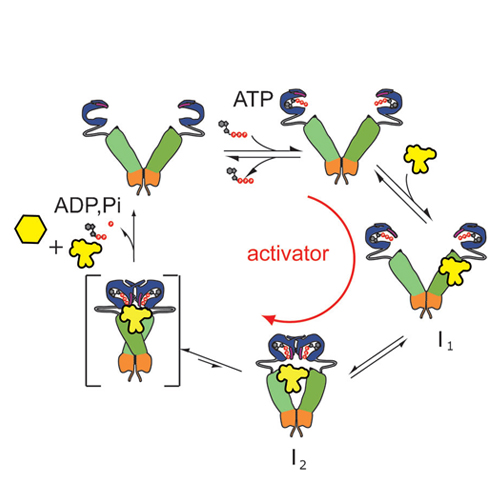Artificial Accelerators of the Molecular Chaperone Hsp90 Facilitate Rate-Limiting Conformational Transitions
22-Sep-2014
Angewandte Chemie International Edition, 2014, DOI: 10.1002/anie.201406578, Volume 53, Issue 45, pages 12257–12262, published on 22.09.2014
Angewandte Chemie International Edition, online article
Angewandte Chemie International Edition, online article
The molecular chaperone Hsp90 undergoes an ATP-driven cycle of conformational changes in which large structural rearrangements precede ATP hydrolysis. Well-established small-molecule inhibitors of Hsp90 compete with ATP-binding. We wondered whether compounds exist that can accelerate the conformational cycle. In a FRET-based screen reporting on conformational rearrangements in Hsp90 we identified compounds. We elucidated their mode of action and showed that they can overcome the intrinsic inhibition in Hsp90 which prevents these rearrangements. The mode of action is similar to that of the co-chaperone Aha1 which accelerates the Hsp90 ATPase. However, while the two identified compounds influence conformational changes, they target different aspects of the structural transitions. Also, the binding site determined by NMR spectroscopy is distinct. This study demonstrates that small molecules are capable of triggering specific rate-limiting transitions in Hsp90 by mechanisms similar to those in protein cofactors.











